1973 formed a year of both an end and a beginning for NASA, with the final J-Class Apollo Lunar Mission, and the beginning of Skylab occurring in this year.

March 1973 saw the crew of Apollo 19 make their way to the Tycho crater, a relatively young crater (by Solar System standards) that hadn’t had a long time to be worn down by subsequent impacts, making it sharply defined. The crew comprised of Fred Haise (Cmdr) who would be the first astronaut to ever visit the Lunar Surface twice, along with rookies William Pogue (CMP) and Gerald Parr (LMP).

The flight to the most southerly point on the lunar surface the NASA had ever attempted had its risks - mainly that if the SPS failed, the crew would be dead - but the consistent success of the CSM/LEM gave them the confidence to take it well off the free-return trajectory in order to reach it.
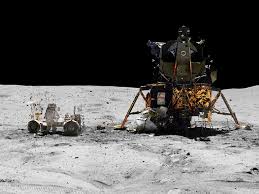
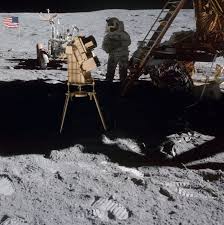
Upon landing on the eastern side of the central peak, they found that this area was quite smooth and flat, and moving around would be fairly easy. Over the three days they were there, they worked tirelessly to obtain the maximum possible return value from their time on the surface. The samples they collected helped to confirm a theory made from Surveyor 7 unmanned lander that had landed on the rim of the crater that the area contained notable quantities of anorthosite.

When they ready to return to the orbiting CSM, they had a shade over 150 Kg of samples (of which some was deep-core samples), and had new seismometers set up, another group of geophones operating with another array of explosive packages ready for later. This final ‘J’ mission would also be only the second time that a LEM was seen lifting off from the lunar surface in real-time by the camera mounted on the Lunar Rover, managed by a carefully timed operation of the camera by a staff member in Mission Control.
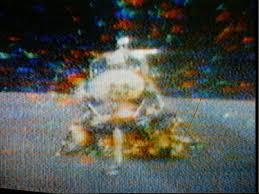
The September of that year marked the beginning of the next step in NASA’s Manned Spaceflight Programme. The Saturn V that rolled out onto the Launch Pad was not like the ones that had preceded it, its S-IVB stage having been replaced with a large Space Station derived from it. Skylab.

When its F-1 engines reached full power, and the hold-down bars were released, it left the launch pad clearing the tower slightly faster than it normally did, carrying slightly less mass than the standard version, and for the first 60 seconds or so the flight went well. But as it punched through Mach 1, the supersonic airflow tore a chunk of the micrometeorite shield, pieces of it jamming one of the two main solar arrays, while the other remained attached only at its forward hinged end. The debris also punched a hole in the tapered interstage adapter that attached the station to the S-II stage, and also damaged the S-IC/S-II separation system preventing it from being jettisoned and it remained stubbornly attached to the S-II all the way into orbit.

By the time it was in orbit, the magnitude of the damage became clear. The jammed solar array refused to open at all, and the other one had been torn loose when the forward-facing solid separation rockets had pulled the spent S-II away from Skylab, leaving only the 4 “Windmill” Solar Arrays on the Apollo Telescope Mount (ATM) to provide power. Furthermore, since the micrometeorite shield was also used for thermal protection for the main body of the station, temperatures quickly rose to over 50° C.
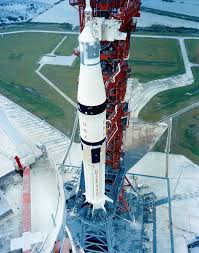
To prepare for the emergency repairs that would be needed to save the station, the first manned flight to it, Skylab 2 (which had been intended to be launched the following day) was delayed by 10 days while the crew was hurriedly trained in the required repair procedures. The biggest problem for Skylab was that keeping the damaged section clear of direct sunlight meant that the remaining solar arrays deployed couldn’t get any meaningful power, starving the station of electricity. This led to the need to constantly move the station to keep a delicate balance between power and temperature, which consumed over half of the available station-keeping propellant.
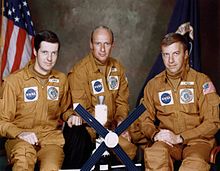
11 days after Skylab was launched, the Skylab 2 crew, Pete Conrad (Cmdr), Paul Weitz (CMP), and Joe Kerwin (Science Pilot) launched atop a Saturn IB to try and repair the station before anything else, vital if it was to be inhabited at all. Following a visual inspection and soft-dock with the station (as so to avoid station keeping while they ate), they undocked and manoeuvred to the jammed solar array to try and pry it loose with a 10ft hooked pole. Unfortunately, it failed and more of the irreplaceable manoeuvring propellant had been consumed in the attempt.
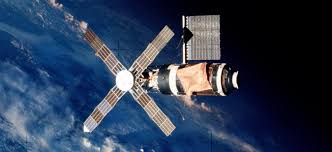
Skylab once they managed to make the needed repairs
After a difficult hard-dock with Skylab (taking 9 attempts) that certainly failed to improve the mood, they set to work deploying the collapsible parasol through a small scientific airlock to act as a sunshade, this succeeded and the temperature inside the station soon dropped to tolerable levels. It would be two weeks before a second EVA was conducted to try and free the remaining main solar array (since with only the ATM solar cells, the station would not have enough power for the Skylab 3 and 4 missions), which was successful in this instance, also testing the both nerves of Conrad and Kerwin along with the strength of their safety tethers, as the sudden deployment of the array flung them from the hull of the station.
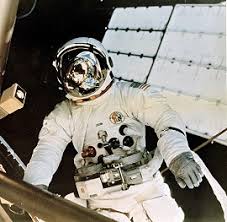

With the station largely brought to a workable condition, they could now focus on the primary medical, Earth, and Solar science experiments, with over 29,000 frames of film of the Sun. After 28 days (a record for NASA), they returned home with the record for the greatest total mass docked in space at over 90,000 Kg, and Skylab fit enough to support the remaining assigned crews.
March 1973 saw the crew of Apollo 19 make their way to the Tycho crater, a relatively young crater (by Solar System standards) that hadn’t had a long time to be worn down by subsequent impacts, making it sharply defined. The crew comprised of Fred Haise (Cmdr) who would be the first astronaut to ever visit the Lunar Surface twice, along with rookies William Pogue (CMP) and Gerald Parr (LMP).
The flight to the most southerly point on the lunar surface the NASA had ever attempted had its risks - mainly that if the SPS failed, the crew would be dead - but the consistent success of the CSM/LEM gave them the confidence to take it well off the free-return trajectory in order to reach it.
Upon landing on the eastern side of the central peak, they found that this area was quite smooth and flat, and moving around would be fairly easy. Over the three days they were there, they worked tirelessly to obtain the maximum possible return value from their time on the surface. The samples they collected helped to confirm a theory made from Surveyor 7 unmanned lander that had landed on the rim of the crater that the area contained notable quantities of anorthosite.
When they ready to return to the orbiting CSM, they had a shade over 150 Kg of samples (of which some was deep-core samples), and had new seismometers set up, another group of geophones operating with another array of explosive packages ready for later. This final ‘J’ mission would also be only the second time that a LEM was seen lifting off from the lunar surface in real-time by the camera mounted on the Lunar Rover, managed by a carefully timed operation of the camera by a staff member in Mission Control.
The September of that year marked the beginning of the next step in NASA’s Manned Spaceflight Programme. The Saturn V that rolled out onto the Launch Pad was not like the ones that had preceded it, its S-IVB stage having been replaced with a large Space Station derived from it. Skylab.
When its F-1 engines reached full power, and the hold-down bars were released, it left the launch pad clearing the tower slightly faster than it normally did, carrying slightly less mass than the standard version, and for the first 60 seconds or so the flight went well. But as it punched through Mach 1, the supersonic airflow tore a chunk of the micrometeorite shield, pieces of it jamming one of the two main solar arrays, while the other remained attached only at its forward hinged end. The debris also punched a hole in the tapered interstage adapter that attached the station to the S-II stage, and also damaged the S-IC/S-II separation system preventing it from being jettisoned and it remained stubbornly attached to the S-II all the way into orbit.
By the time it was in orbit, the magnitude of the damage became clear. The jammed solar array refused to open at all, and the other one had been torn loose when the forward-facing solid separation rockets had pulled the spent S-II away from Skylab, leaving only the 4 “Windmill” Solar Arrays on the Apollo Telescope Mount (ATM) to provide power. Furthermore, since the micrometeorite shield was also used for thermal protection for the main body of the station, temperatures quickly rose to over 50° C.
To prepare for the emergency repairs that would be needed to save the station, the first manned flight to it, Skylab 2 (which had been intended to be launched the following day) was delayed by 10 days while the crew was hurriedly trained in the required repair procedures. The biggest problem for Skylab was that keeping the damaged section clear of direct sunlight meant that the remaining solar arrays deployed couldn’t get any meaningful power, starving the station of electricity. This led to the need to constantly move the station to keep a delicate balance between power and temperature, which consumed over half of the available station-keeping propellant.

11 days after Skylab was launched, the Skylab 2 crew, Pete Conrad (Cmdr), Paul Weitz (CMP), and Joe Kerwin (Science Pilot) launched atop a Saturn IB to try and repair the station before anything else, vital if it was to be inhabited at all. Following a visual inspection and soft-dock with the station (as so to avoid station keeping while they ate), they undocked and manoeuvred to the jammed solar array to try and pry it loose with a 10ft hooked pole. Unfortunately, it failed and more of the irreplaceable manoeuvring propellant had been consumed in the attempt.
Skylab once they managed to make the needed repairs
After a difficult hard-dock with Skylab (taking 9 attempts) that certainly failed to improve the mood, they set to work deploying the collapsible parasol through a small scientific airlock to act as a sunshade, this succeeded and the temperature inside the station soon dropped to tolerable levels. It would be two weeks before a second EVA was conducted to try and free the remaining main solar array (since with only the ATM solar cells, the station would not have enough power for the Skylab 3 and 4 missions), which was successful in this instance, also testing the both nerves of Conrad and Kerwin along with the strength of their safety tethers, as the sudden deployment of the array flung them from the hull of the station.
With the station largely brought to a workable condition, they could now focus on the primary medical, Earth, and Solar science experiments, with over 29,000 frames of film of the Sun. After 28 days (a record for NASA), they returned home with the record for the greatest total mass docked in space at over 90,000 Kg, and Skylab fit enough to support the remaining assigned crews.